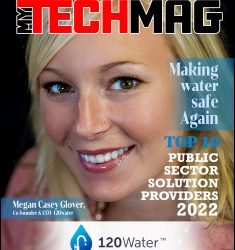Compliance professionals work on the bottom-line financial benefits of a company by applying an integrated approach towards GRC (Governance, Risk and Compliance). A big part of the challenge for the compliance professionals, is their thinking towards the regulatory drivers of the compliance policy of a company. They are trained to think towards the compliance policies in a way that they are unable to create some critical points in the policy to resonate with the management or compel equal operational opportunities. Some professionals may just make impulsive decisions according to the familiar recitations of regulatory and legal requirements as a primary justification for business processes that should be implemented in the compliance program of the company. These implementations leave a notion that, if these regulations and legal laws are not followed then the company has to deal with reputational harm as well as pay big fines or penalties.
Compliance professionals tend to seek this singular focused attention-getting attribute while emphasizing the advantages of GRC (Governance, Risk and Compliance) integration in front of senior executives, and this can only be a negative incentive in terms of organizational behaviour.
Whereas, a simple statement that puts a positive and powerful impact in front of the management is “Good compliance is good for business”.
Now if we see as an example, for communicating with the management on metrics of the compliance program, professionals use a paradigmatic way, i.e., incidents reported, risk assessments carried out, or any disciplinary actions are taken.
But this singular focused presentation for any management will lead to some programmatic gaps, like:
- Disjointed operating strategies
- Lack of effective oversight mechanisms
- Organizational silos
- Waste of resources and information
- Unnecessary complexity
- Lack of data integrity
Now, if professionals try to explain these points to the management for decreasing these programmatic gaps and emphasizing other effective indicators of the compliance program, such as:
- Aligned operating strategy
- Effective oversight mechanism
- Integrated risk and control activity
- Resource and Personnel optimization
- Streamlined business processes
- Data and Information integrity
Compliance professionals can monitor and measure the operational benefits of an integrated GRC (Governance, Risk and Compliance) program to help or assist the management in making a strong compliance process in terms of various aspects, such as enhancement in revenue, the reputation of the firm, brand protection, customer attraction and retention, improvement in workforce performance, asset protection, and many more, to run the business effectively.
The better-integrated compliance program can be quite valuable and helpful for a firm. So, professionals create the integrated GRC (Governance, Risk and Compliance) program by keeping in mind that for the specific business bottom line what is more important. This involves understanding and gaining a perspective on current state costs, locating any redundancies, unnecessary complexities, and identifying programming gaps.
The fundamental understanding of these key benefits by the compliance professionals to assist the management in creating a “new state”, will capture and retain the management’s attention. The key features of an integrated GRC (Governance, Risk and Compliance) program are as follows:
1) High-quality Information:
The integrated GRC (Governance, Risk and Compliance) allows the management to take more profitable and intelligent decisions with ease.
2) Optimized Process:
To reduce the lag in time and unwanted variations value-added activities are added through the program.
3) Better Capital Allocation:
By identifying the areas of inefficiency and redundancy will help in allocating human capital.
4) Improved Effectiveness:
The GRC (Governance, Risk and Compliance) program will definitely improve the effectiveness of the firm.
5) Secure Reputation:
The program will manage and reduce the risk of the company to enhance its reputation.
6) Reduced Costs:
The reduced costs will help in profit the firm on ROI (Return on Investment) gains by integrating the GRC (Governance, Risk and Compliance) program.
Compliance professionals can improve a company’s progress by understanding, managing, monitoring, and measuring and analyzing the business bottom line and help the management of a company to make decisions with ease by minimizing the risk and increasing the value of the company and its employees by integrating GRC (Governance, Risk and Compliance) program.







